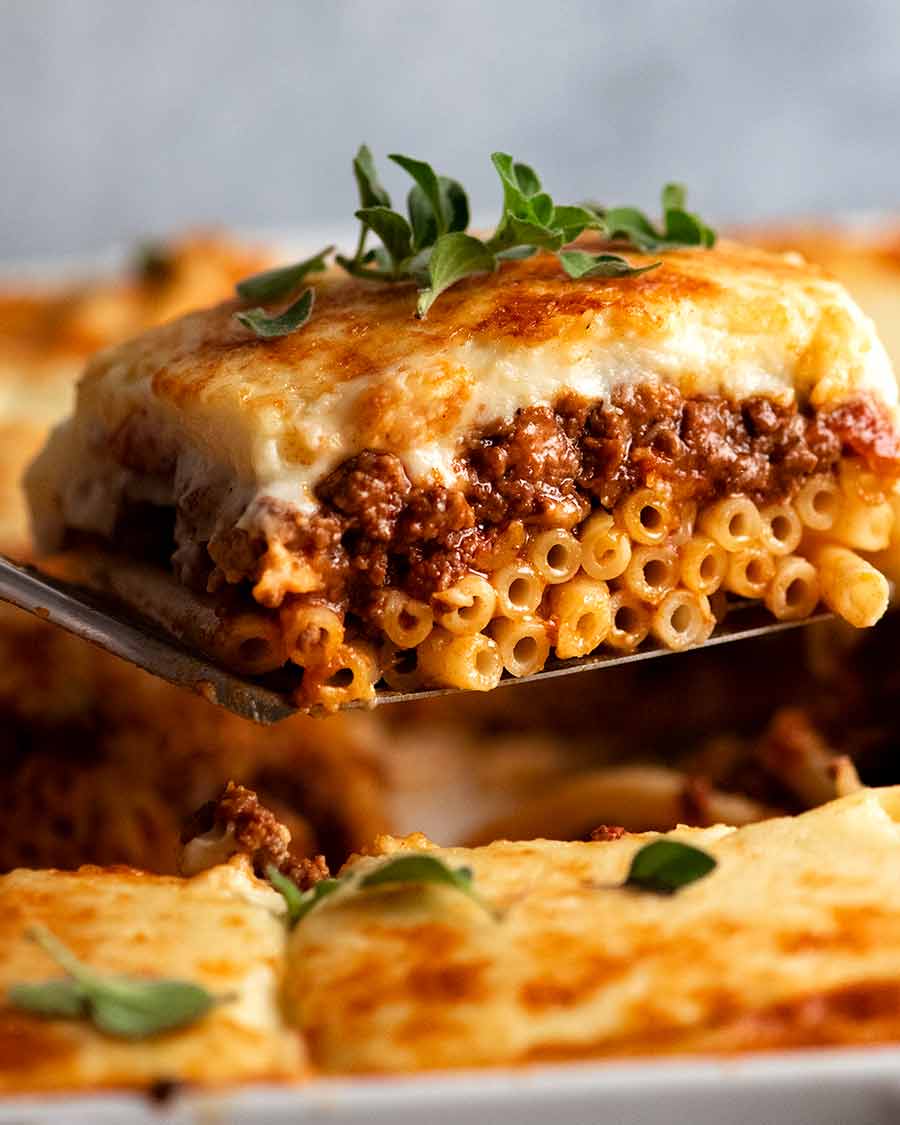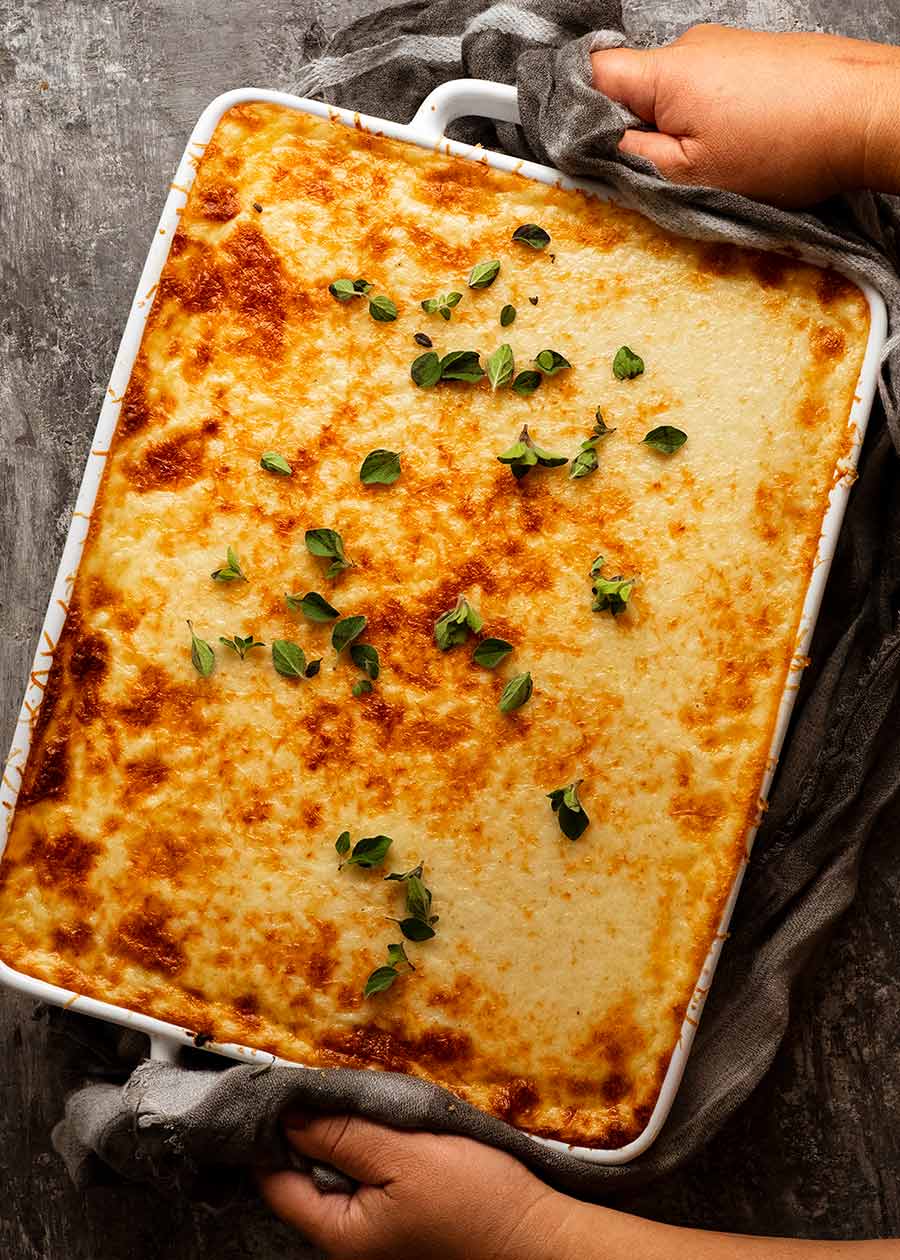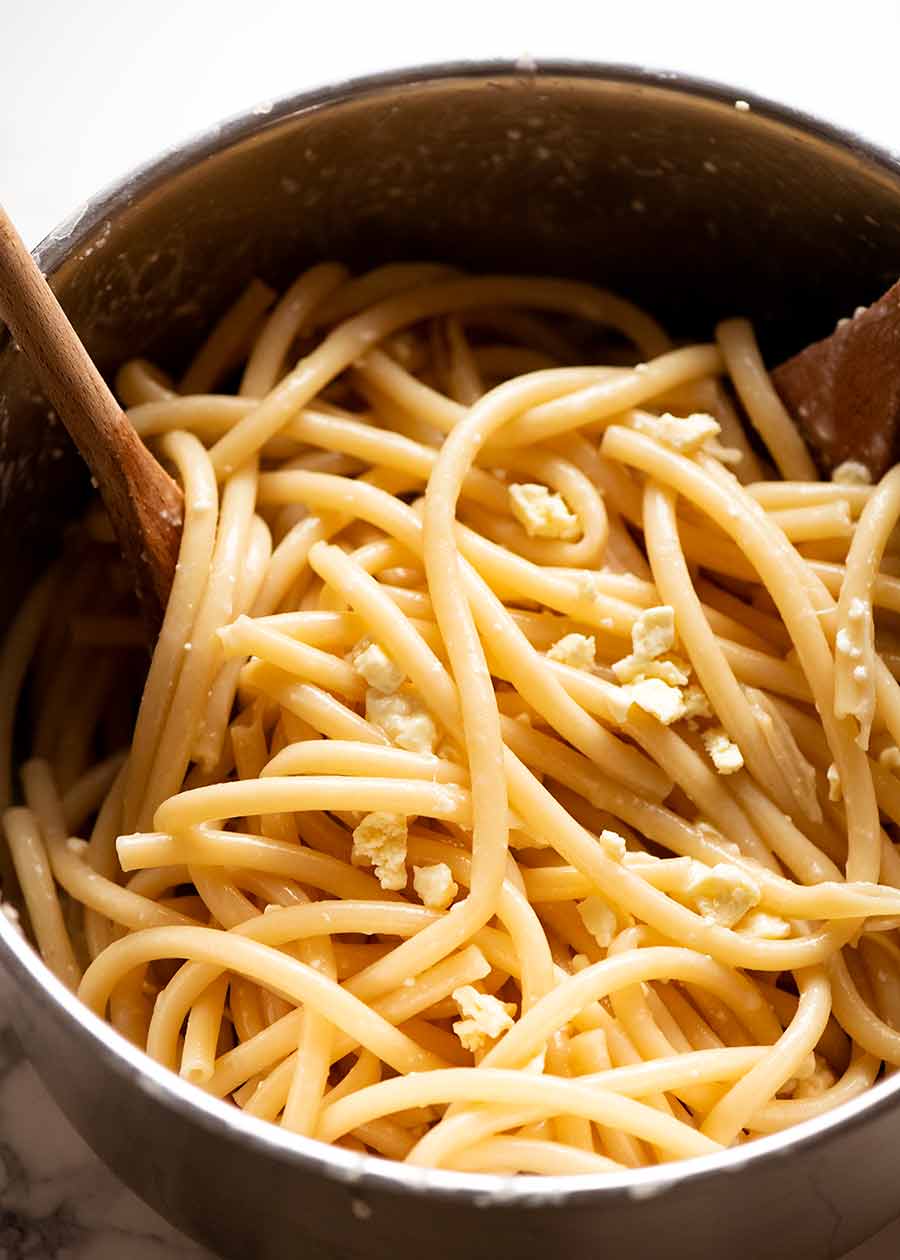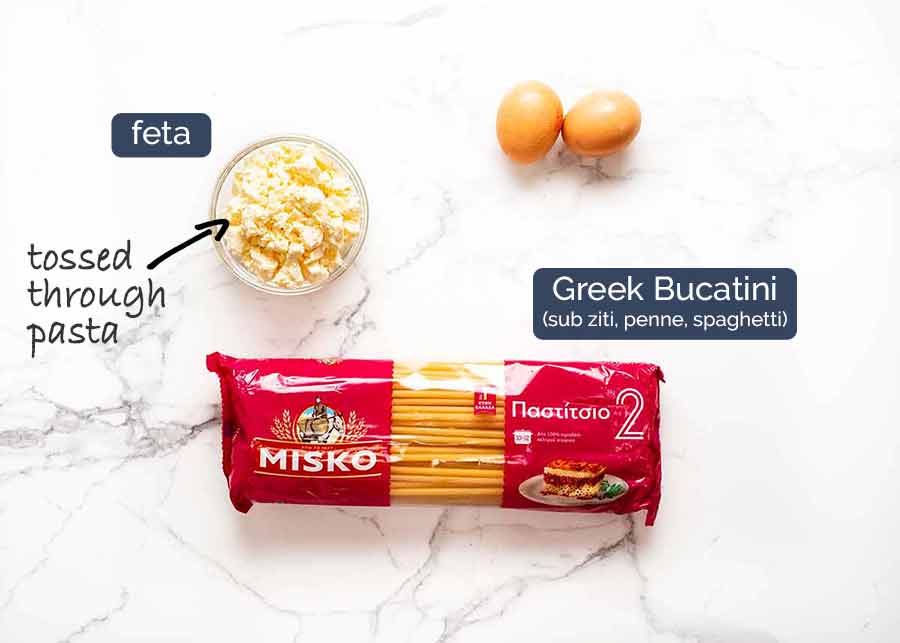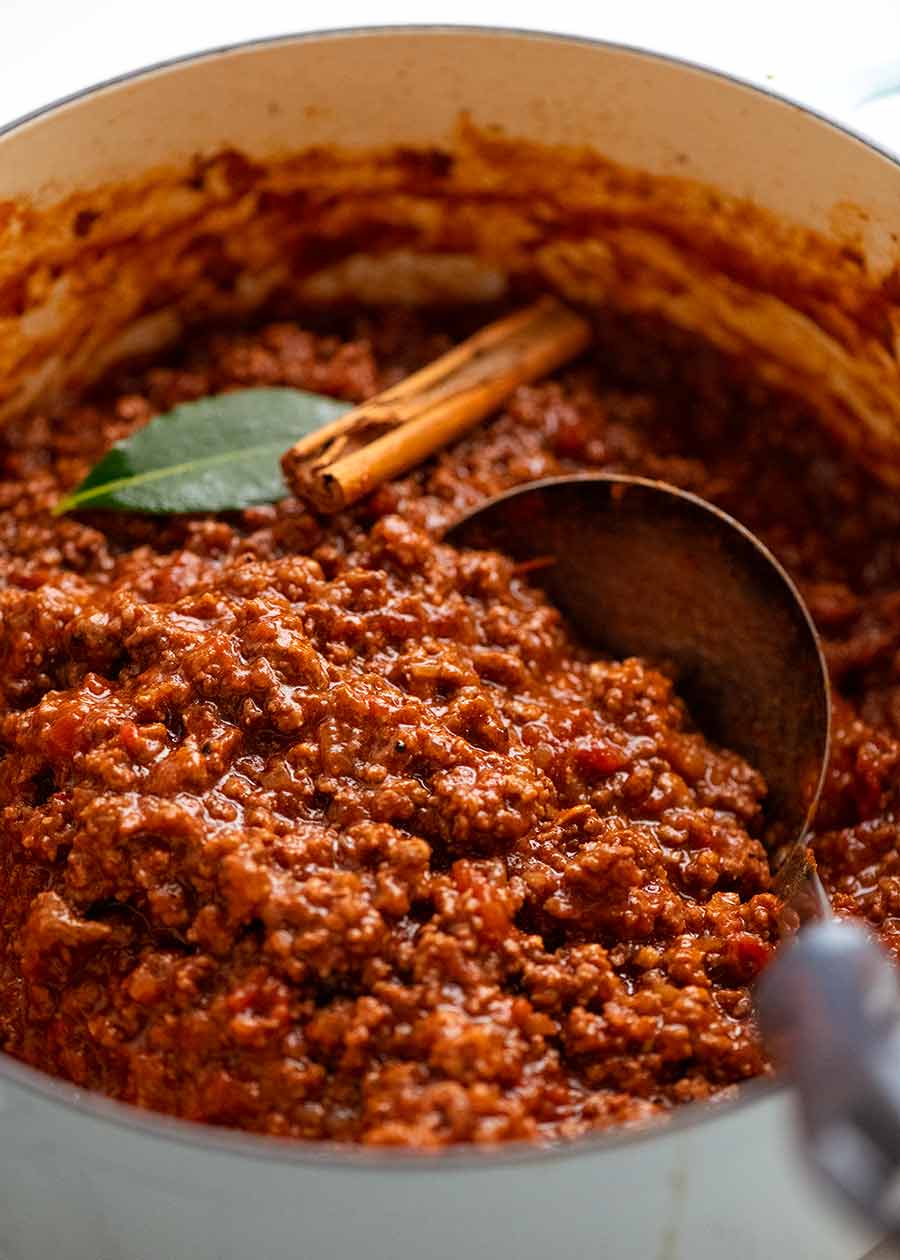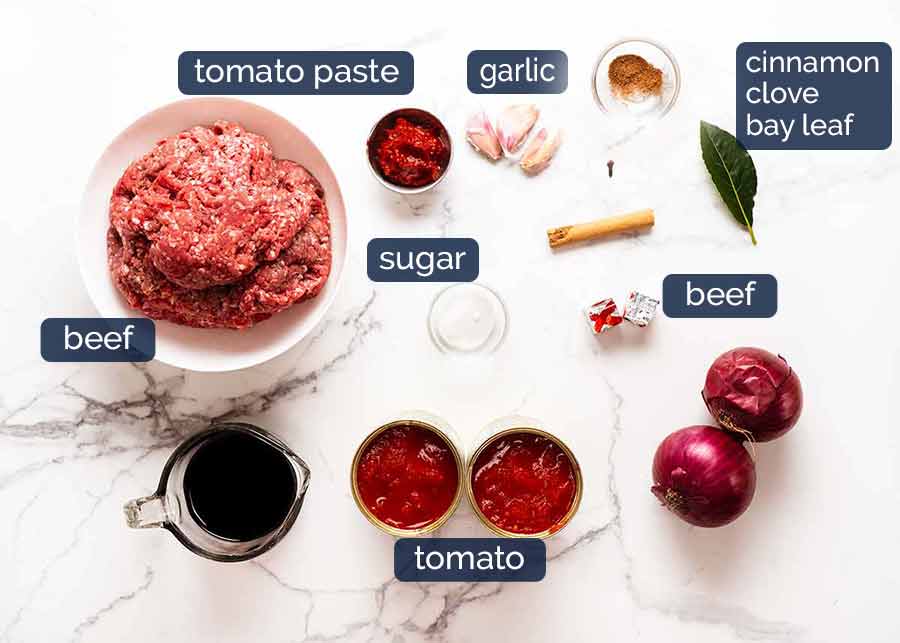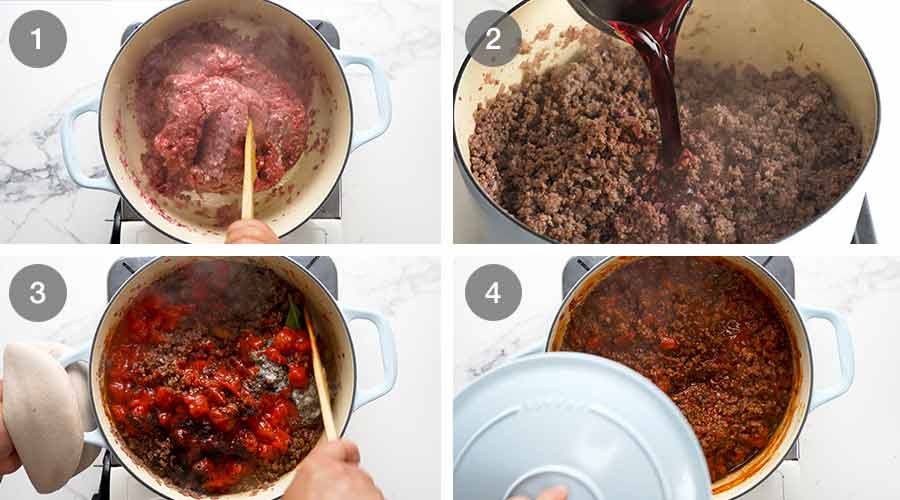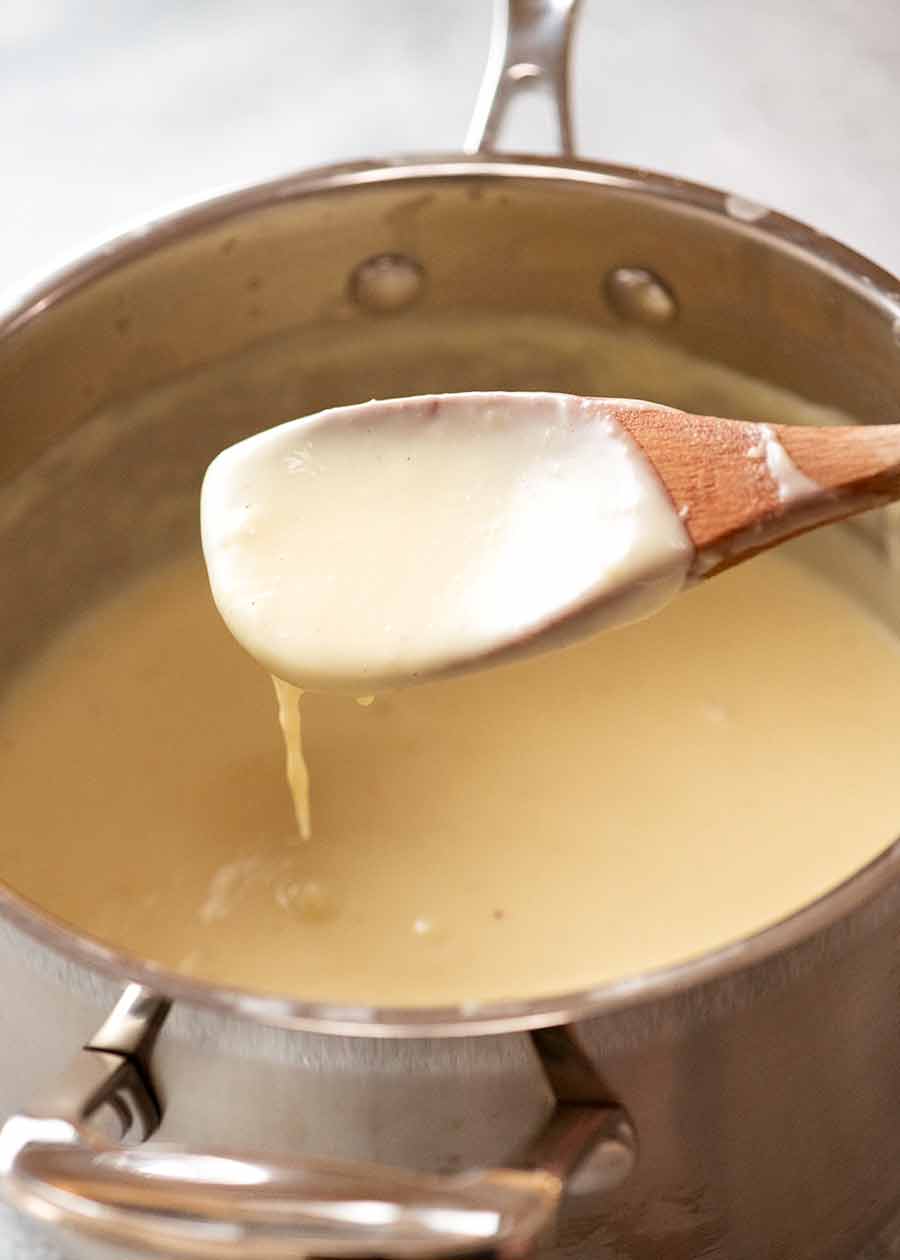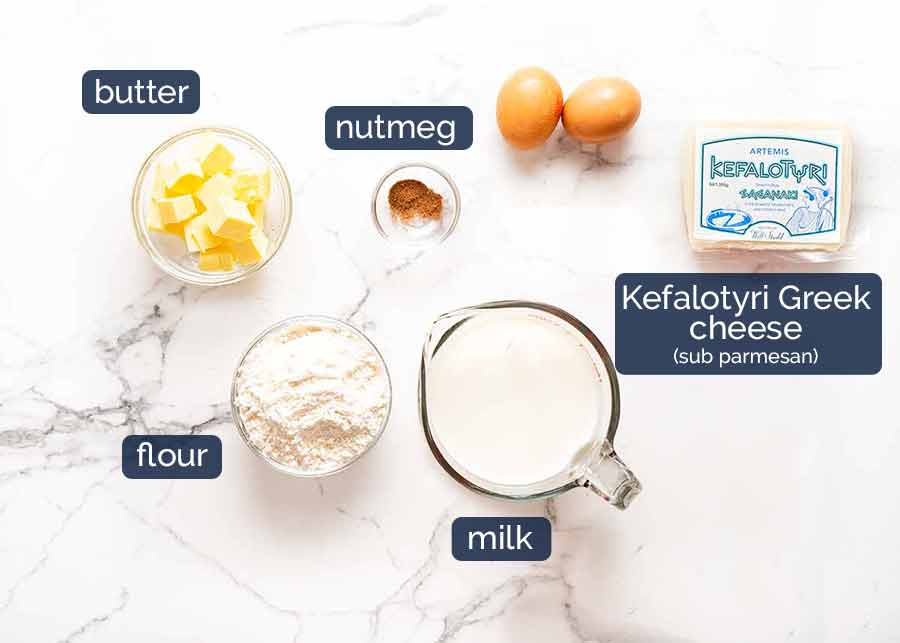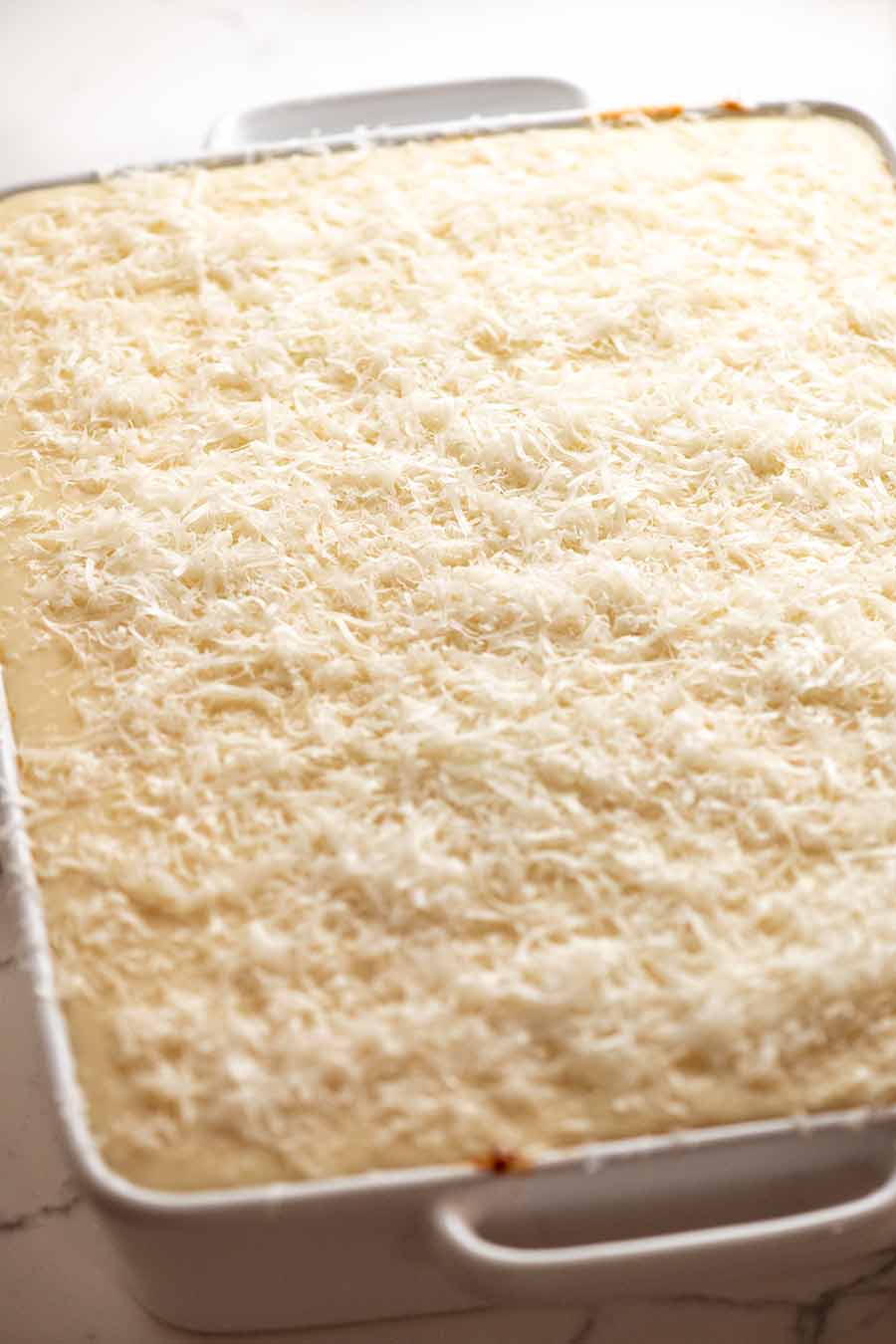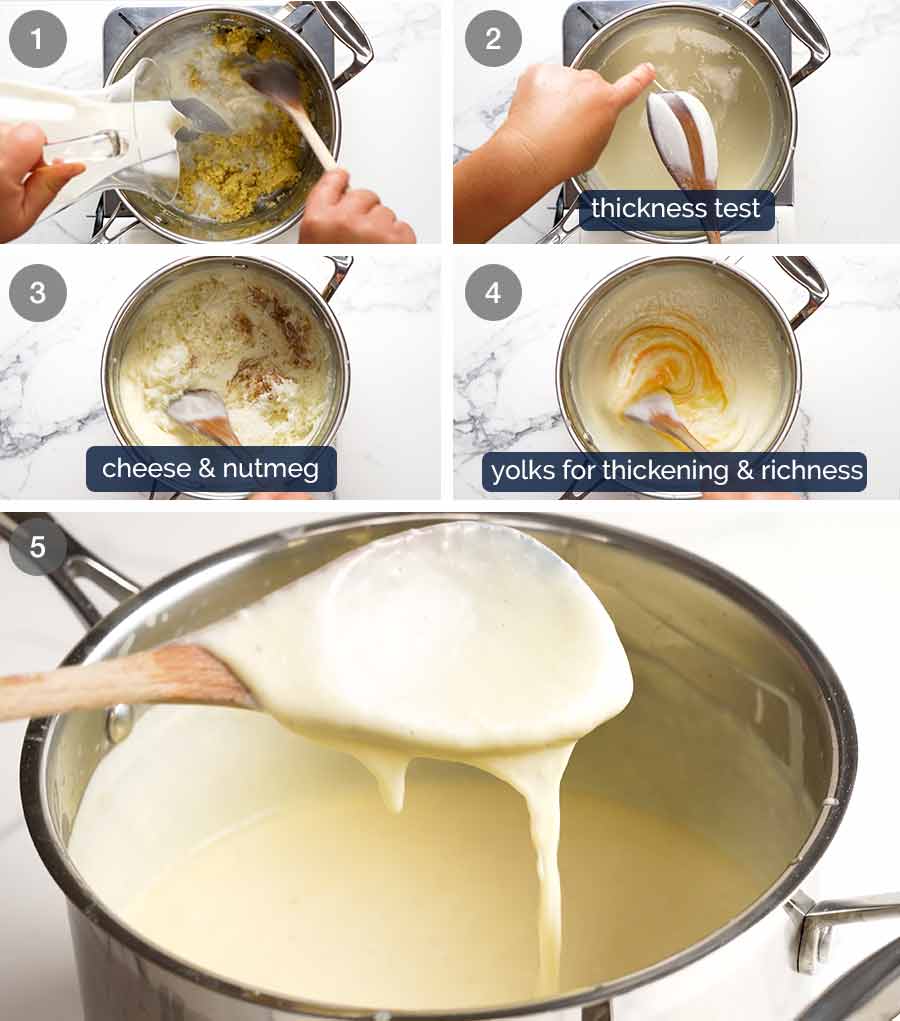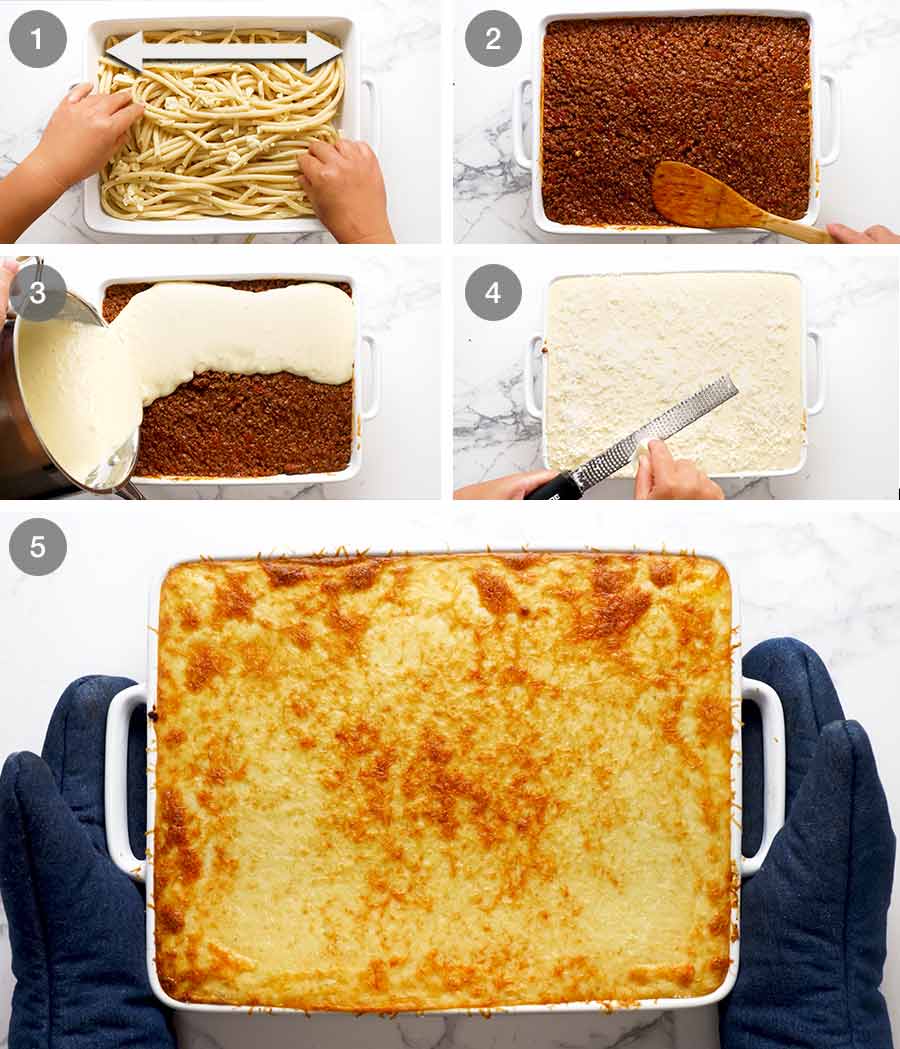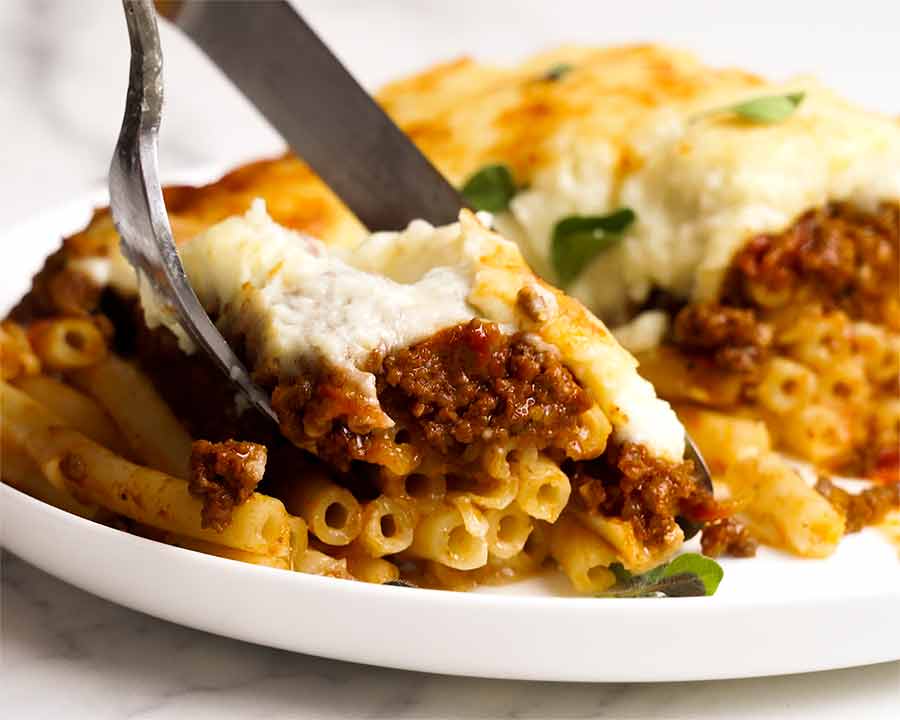Pastitsio – Greek pasta bake
Pastitsio is so much more than just another pasta bake. A step up from Baked Spaghetti and – dare I say it – even America’s famed Baked Ziti (which regular readers know I hold in high esteem!), this is Greece’s version of classic Italian Lasagna. We love how it slices neatly with the layers clearly visible, and the striking tubular Greek bucatini-style pasta. We love how the rich red wine, tomato and meat sauce is spiked with cinnamon and cloves, giving it uniquely Greek personality rather than “just another meat sauce”. And we (Cheese Monsters in particular) love the extra thick, cheesy Béchamel sauce topping. The Greek’s have not skimped on any element here. It’s all about abundance!
What you need for Pastitsio
There are 3 parts to Pastitsio:
1. Feta-tossed pasta – Thick bucatini
The unique thing about the pasta layer of Pastitsio is the feta cheese tossed through it (yum!) and the addition of egg whites. Feta adds flavour while the egg binds the pasta together so you can cut neat slices, as pictured above.
1.1 Ingredients for the Pastitsio pasta layer
Here’s what you need for the pasta layer:
Greek bucatini
The pasta traditionally used in Pastitsio is a thick bucatini-style pasta called “Pastitsio pasta No. 2”, pictured below. It’s a tubular pasta – like a really thick spaghetti with a hole running through it. However it’s thicker than Italian bucatini , such as bucatini used in this Zucchini pasta.
Where to find Greek bucatini-style Pastitsio pasta No. 2
You’ll find Greek Pastitsio Pasta No. 2 at European delis and grocers around Sydney. I found the Misko brand (pictured) at a fruit & veg store in Top Ryde (Sydney) which has a good stock of European goods.
Can’t find Pastitsio pasta?
Honestly, don’t get too hung up about it. Use ziti or penne instead if you want it to look similar when you cut it. Otherwise, ordinary Italian bucatini – sold in the pasta aisle of everyday supermarkets these days – or really, any pasta is just fine. It won’t alter flavour, just how it looks!
2. Pastitsio meat sauce
Making the meat sauce is really no different to making your favourite Spaghetti Bolognese. It’s very straight forward! But there’s two important differences: Here’s what you need for the meat sauce layer: No boat-rockers amongst the above ingredients. Red onion is often preferred in Greek cooking rather than the typical brown/yellow onions. And as noted above, the added spices that make this a Pastitsio meat sauce rather than an Italian-style one are cinnamon and cloves.
2.2 How to make Pastitsio meat sauce
As for making it, just pretend you’re making Bolognese! Unlike Bolognese however where a long and slow cooking can be optional, the Pastitsio meat sauce needs to be simmered for a good hour to reduce the sauce so it’s really thick. This makes the meat sauce sit on the pasta, rather than mixing through the pasta layer, so you get distinct and tidy layers. The added bonus is that the longer simmering time makes the beef super-tender and really intensifies the sauce flavours.
3. Greek Béchamel Sauce
The Greek Béchamel sauce used in Pastitsio differs from the typical white sauce you see on things like Lasagna: In fact, if you can make it the day before and leave it overnight in the fridge, the flavour also gets even better!
3.1 What goes in Pastitsio Béchamel sauce
Here’s what you need to make the Pastitsio Béchamel sauce:
Butter, flour and milk – All the usual suspects you need to make a basic Béchamel / white sauce;Kefalotyri Cheese – A traditional Greek cheese made from sheep or goat’s milk. It tastes somewhat like parmesan but is not as salty or sharp. More on Kefalotyri below. Sold at Woolworths and Coles in Australia, or European/Greek delis. But don’t go out of your way to hunt it down. Readily-available cheeses like Parmesan or Romano make perfectly acceptable substitutes (she ducks as 10 million Greeks throw rotten tomatoes at her);Nutmeg – A classic inclusion with Béchamel, but not the end of the world if you don’t have it. Freshly ground best, if you have it; andEgg yolks – This helps the Béchamel Sauce set better so the thick layer holds its shape when you cut slices.The egg whites are used separately for the pasta, acting as a “glue” to hold the pasta together when you slice it. Full visual effect!
Kefalotyri Greek cheese
This is a firm, traditional Greek cheese made from sheep or goat’s milk. It’s used to top the Pastitsio to give it a delicious golden crust as well as stirring through the Béchamel Sauce to give it flavour. The egg whites are used separately for the pasta, acting as a “glue” to hold the pasta together when you slice it. Full visual effect! Kefalotyri cheese is a hard cheese with a salty, savoury and piquant taste, similar to Parmesan. However it’s not as salty as parmesan. Believe it or not, these days it’s available at Woolworths and Coles in Australia! 🙌🏻 Pictured below. Best substitutes (in order): Kefalograviera (a related, hard Greek cheese), pecorino, Parmesan, Romano.
3.2 How to make Pastitsio Béchamel sauce
Here’s how to make the Pastitsio white sauce:
4. Assembly!
You need a BIG casserole dish for Pastitsio! A typical 9 x 13″ pan won’t cut it, it’s not deep enough. My baking dish is 33 x 22 x 7 cm / 9 x 13 x 2.75″. Lumpy sauce? Don’t worry! Just give it a good whisk and it will smoothen out. The next steps, along with some tips I figured out through trial and error:
What to serve with Pastitsio
I can’t think of anything more appropriate than a big, fat juicy Greek Salad on the side! This traditional salad is a lovely, refreshing contrast to the richness of Pastitsio. But here are a few more side salads that I think will also go really well with Pastitsio: Enjoy! – Nagi x
Watch how to make it
10 more delicious Greek recipes
Life of Dozer
A familiar vision – rear view of Dozer’s rump bounding into the water.
